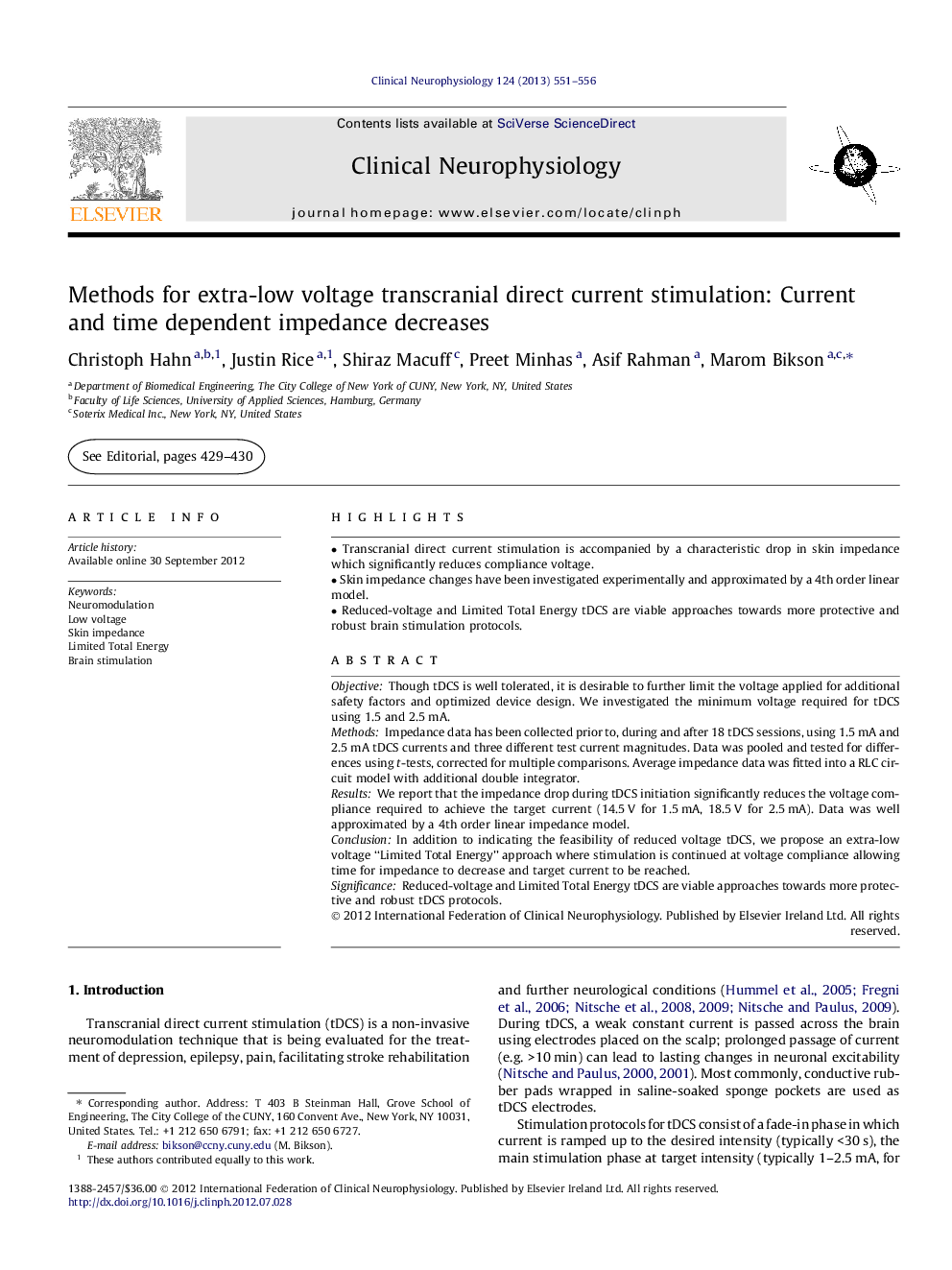| Article ID | Journal | Published Year | Pages | File Type |
|---|---|---|---|---|
| 3044368 | Clinical Neurophysiology | 2013 | 6 Pages |
ObjectiveThough tDCS is well tolerated, it is desirable to further limit the voltage applied for additional safety factors and optimized device design. We investigated the minimum voltage required for tDCS using 1.5 and 2.5 mA.MethodsImpedance data has been collected prior to, during and after 18 tDCS sessions, using 1.5 mA and 2.5 mA tDCS currents and three different test current magnitudes. Data was pooled and tested for differences using t-tests, corrected for multiple comparisons. Average impedance data was fitted into a RLC circuit model with additional double integrator.ResultsWe report that the impedance drop during tDCS initiation significantly reduces the voltage compliance required to achieve the target current (14.5 V for 1.5 mA, 18.5 V for 2.5 mA). Data was well approximated by a 4th order linear impedance model.ConclusionIn addition to indicating the feasibility of reduced voltage tDCS, we propose an extra-low voltage “Limited Total Energy” approach where stimulation is continued at voltage compliance allowing time for impedance to decrease and target current to be reached.SignificanceReduced-voltage and Limited Total Energy tDCS are viable approaches towards more protective and robust tDCS protocols.
► Transcranial direct current stimulation is accompanied by a characteristic drop in skin impedance which significantly reduces compliance voltage. ► Skin impedance changes have been investigated experimentally and approximated by a 4th order linear model. ► Reduced-voltage and Limited Total Energy tDCS are viable approaches towards more protective and robust brain stimulation protocols.
